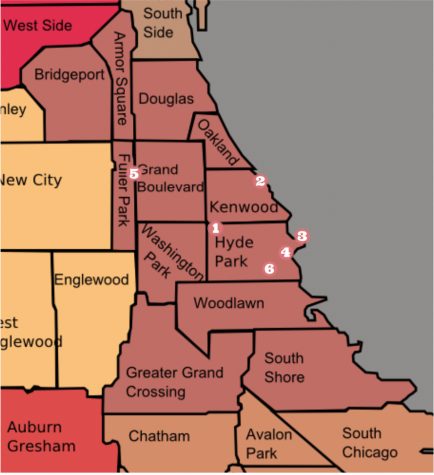Cultural offerings overlooked
May 4, 2023
The South Side of Chicago is one of the most important urban areas in American history. The 1893 World’s Columbian Exposition, which was held in Jackson Park, is conventionally seen as the beginning of a great period for the South Side. Representatives from nations around the world created exhibitions showcasing their nation’s culture. The United States exhibitions at the event focused on showing off the scientific and cultural advancements of the country. This was a pivotal moment for the United States because it demonstrated that the country was becoming a leading power in the world’s new Industrial Age. In turn, Chicago, and its South Side, were the beating heart of this industrializing America.
While many of the landmarks and monuments from the event, including the Museum of Science and Industry, the Midway Plaisance Park and the Garden of the Phoenix —part of the Japanese exhibit at the fair — still exist today, the South Side has dramatically changed since then. Currently, the most commonly held perceptions of the South Side are overwhelmingly negative. Violence and poverty, instead of industry and innovation, are now what Americans think of when talking about the South Side.
However, various marks remain from the more prosperous periods in these neighborhoods’ histories. Museums and monuments, as well as some of the most robust parts of the Chicago public parks system, are in these neighborhoods.
Jay Molony, a senior who grew up in the suburbs but whose family moved to Hyde Park, has enjoyed exploring the different landmarks of the South Side.
The historical element is a little more interesting than the suburbs.
— Jay Molony
“They’re cool because they’re more actually significant in a way — there’s a statue that’s dedicated to a specific person, instead of, ‘Here’s a park, there’s a playground here,’” Jay said. “The historical element is a little more interesting than the suburbs.”
Chicago’s problems with violence are so well known, they have become an issue in national politics. Former President Donald Trump proposed deploying the national guard to the city to deal with the gun violence problems in the majority Black and Latinx neighborhoods on the South and West sides.
William Montague, a senior whose family has lived in South Shore for three generations, thinks that the neighborhood has physically remained similar, but demographic changes damaged the neighborhood.

2. Former home of Blues legend Muddy Waters, 4339 S. Lake Park Ave. This historical landmark was a gathering space for musicians and entertainers to create their music.
3. Promontory Point, 5491 S. DuSable Lake Shore Drive. The Point is nationally recognized as a historic place. It sits on a human-created peninsula and offers an unobstructed view of downtown Chicago.
4. Osaka Gardens, 6300 S. Cornell Ave. The gardens symbolize the allyship between Japan and the United States. The Phoenix Temple in the gardens was built for the World’s Columbian Exposition.
5. Eden Place Nature Center, 4417 S. Stewart Ave. Using natural landscaping to support plants and animals, it is the only nature center on Chicago’s South Side.
6. Statue of the Republic, 6401 S. Stony Island Ave. The stature commemorates the 25th anniversary of the World’s Columbian Exposition. It’s a smaller, bronze version of the original stature from the exposition. — Compiled by Ainsley Williams
“It basically looked the same exact way it did. There was a cultural center and that was a big golf area; a lot of families golfed there,” William said about the former South Shore Country Club, a segregated institution which closed in 1973 but has been repurposed as a community space. “And then white flight happened, and pretty much everyone left, and I guess the neighborhood got worse.”
The South Side was highly diverse and populated largely by immigrant communities working in the steel and meat packing industries. Starting in 1910, the Great Migration drew thousands of Black people from southern states to the industrialized North, many settling in Chicago to seek opportunity and build new lives.
There was significant housing discrimination in Chicago — policies and practices such as redlining, which forced Black people to live in an area of the South Side called the “Black Belt.” Despite these policies, the area was not uniformly poor or Black. Hyde Park and Kenwood were wealthy, majority-white neighborhoods. The University of Chicago was founded in that area in 1890. During the 1910s and ’20s, Bronzeville was a hotspot of Black culture and business comparable to Harlem in New York.
The South Side has not always been the way that it is, and there’s no reason why it has to stay that way now. Recent years have shown positive signs. Developments, such as the construction of the Obama Presidential Center in Jackson Park, are indicative of revitalization in the South Side.
“Property taxes in my neighborhood are basically on a skyrocket, especially because of the Obama library. I think that’s really improving my neighborhood,” William said. “I notice a lot more people having a good time, walking their dogs outside more often, than I have in previous years. That’s just something I’ve noticed. It’s definitely on an uprise.”